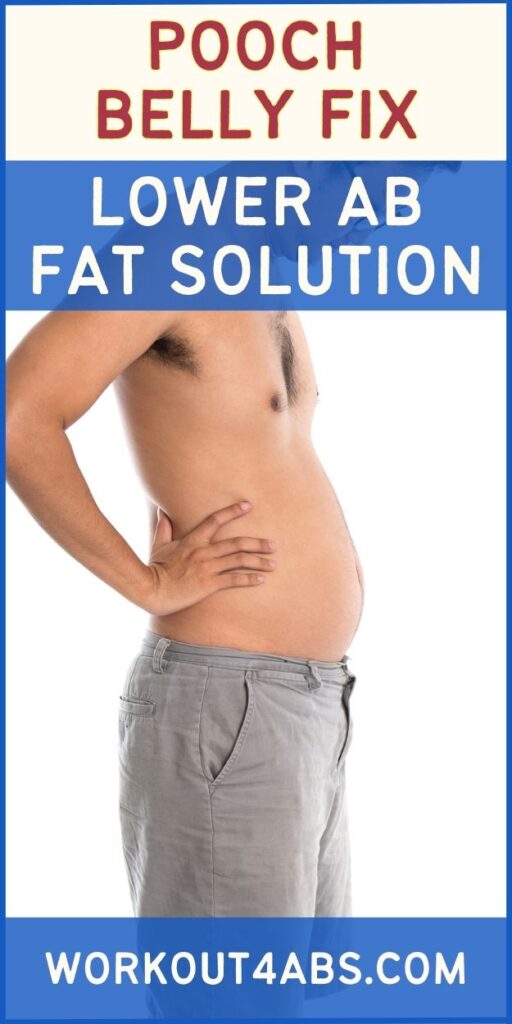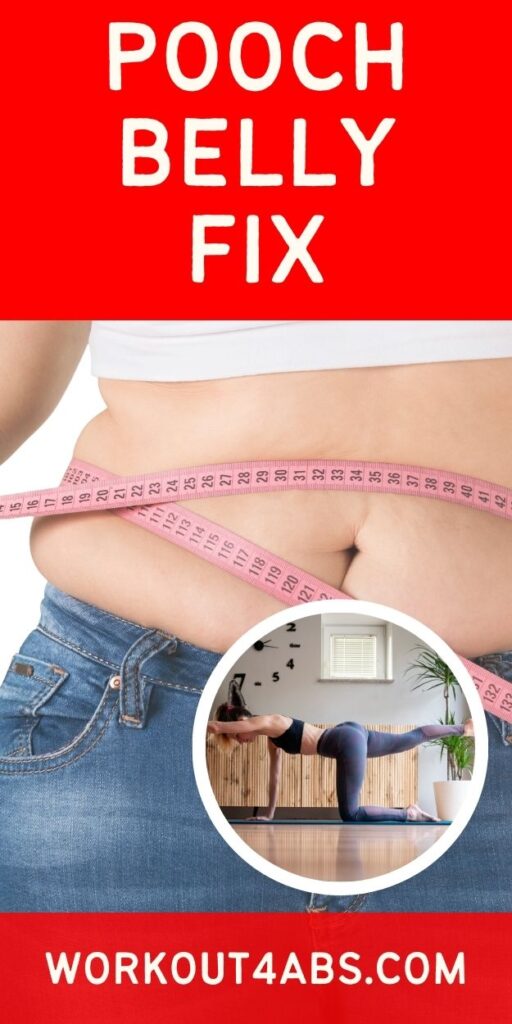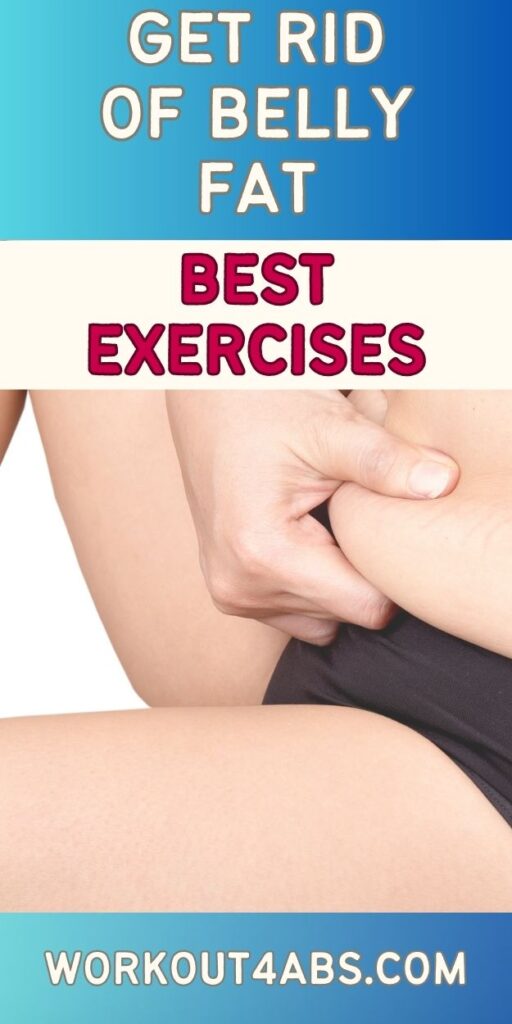In the pursuit of a flat and toned abdomen, understanding the underlying causes of a “pooch belly” is crucial. This article delves into the factors that might contribute to this common issue and provides a comprehensive guide to effective exercises and lifestyle adjustments aimed at achieving a slimmer and more sculpted midsection.
Pooch Belly – Why It Happens and 3 EASY FIXES For It
If you enjoyed these tips, please save this pin to your Pinterest Board.

A Pooch Belly Can Result from Gut Dysbiosis
Gut dysbiosis refers to an imbalance in the composition and function of the microbial community (microbiota) in the gastrointestinal tract. This imbalance can have various effects on digestion and overall health, including bloating and changes in abdominal appearance. Here’s how gut dysbiosis can lead to bloating and the appearance of a protruding belly:
- Fermentation and Gas Production: Gut dysbiosis can result in an overgrowth of certain types of bacteria that are particularly efficient at fermenting dietary carbohydrates. During fermentation, these bacteria produce gases like carbon dioxide, methane, and hydrogen. The accumulation of gas in the intestines can lead to bloating and abdominal distension.
- Increased Water Retention: Dysbiosis can disrupt the normal absorption of water in the intestines. As a result, excess water may accumulate in the gut, contributing to abdominal bloating and a feeling of fullness.
- Inflammation and Gut Barrier Dysfunction: Imbalances in the gut microbiota can lead to inflammation and compromise the integrity of the gut barrier. This can allow undigested food particles, bacteria, and toxins to enter the bloodstream, leading to systemic inflammation. Abdominal bloating can be a symptom of this underlying gut dysfunction.
- Changes in Food Processing: Dysbiosis can affect the way your body processes and absorbs nutrients from food. It may lead to malabsorption of certain nutrients, which can result in changes in body composition and potentially contribute to the appearance of a protruding belly.
- Impact on Hormones: The gut microbiota plays a role in regulating hormones that influence appetite, metabolism, and fat storage. Dysbiosis can disrupt these hormonal pathways, potentially leading to weight gain and changes in body fat distribution, including abdominal fat accumulation.
- Food Sensitivities: Altered gut microbiota can increase sensitivity to certain foods, particularly those that are poorly digested or fermented by bacteria. Consuming these foods may lead to more pronounced bloating and abdominal discomfort.
- Psychological Effects: Persistent bloating and changes in abdominal appearance can affect an individual’s self-esteem and body image perception. This can lead to feelings of looking “fat” when, in reality, the issue is related to gut health.
It’s important to note that abdominal bloating and changes in abdominal appearance can have various causes, and gut dysbiosis is just one potential factor. Other factors such as diet, stress, hormonal changes, and gastrointestinal conditions (e.g., irritable bowel syndrome) can also contribute to these symptoms.
If you suspect that gut dysbiosis may be contributing to your bloating and changes in abdominal appearance, it’s advisable to consult with a healthcare professional, such as a gastroenterologist or registered dietitian. They can help assess your symptoms, perform relevant tests, and provide guidance on dietary and lifestyle changes to address gut health and alleviate these issues.
If you enjoyed these tips, please save this pin to your Pinterest Board.

Pelvic Floor and Lower Abs
The pelvic floor and lower abdominal muscles play a crucial role in supporting the gut and maintaining abdominal and pelvic health. Working together, they help prevent the “pooch belly” look, which can be associated with issues like diastasis recti and pelvic floor dysfunction. Here’s how they contribute to abdominal and pelvic stability:
- Pelvic Floor Function: The pelvic floor is a group of muscles, ligaments, and connective tissues that form a supportive hammock-like structure at the base of the pelvis. These muscles support the bladder, rectum, and reproductive organs and play a vital role in urinary and fecal continence. When functioning properly, the pelvic floor muscles provide upward support to the organs in the pelvic cavity, including the lower part of the digestive tract (rectum).
- Lower Abdominal Muscles: The lower abdominal muscles, including the transverse abdominis and the lower fibers of the rectus abdominis, help stabilize the lower abdomen. They work in conjunction with the pelvic floor to provide core stability and support for the internal organs.
- Core Coordination: The pelvic floor and lower abdominal muscles are part of the broader core musculature, which includes the muscles of the abdomen, lower back, and pelvis. Proper coordination between these muscles is essential for maintaining optimal intra-abdominal pressure and spine stability during various activities, including standing, lifting, and exercise.
- Preventing Diastasis Recti: Diastasis recti is a condition where the two sides of the rectus abdominis muscle separate along the midline of the abdomen. The pelvic floor and lower abdominal muscles help support and compress the abdominal wall, reducing the risk of diastasis recti during activities that put strain on the abdominal muscles.
- Posture and Alignment: The alignment of the pelvis and spine is influenced by the pelvic floor and lower abdominal muscles. When these muscles are functioning well, they help maintain good posture, which can contribute to a flatter and more stable abdominal appearance.
- Preventing Prolapse: A weak pelvic floor can lead to pelvic organ prolapse, where one or more pelvic organs (such as the bladder, uterus, or rectum) descend into the vaginal canal. The lower abdominal muscles, when engaged appropriately, can provide additional support to help prevent pelvic organ prolapse.
To promote a healthy and aesthetically pleasing abdominal appearance and reduce the risk of a “pooch belly,” it’s important to:
- Strengthen the Pelvic Floor: Perform pelvic floor exercises, such as Kegels, to strengthen these muscles and improve their function.
- Engage the Lower Abs: Incorporate exercises that target the lower abdominal muscles, like leg raises and pelvic tilts, to enhance core stability.
- Maintain Good Posture: Focus on maintaining proper posture throughout the day to optimize the alignment of the pelvis and spine.
- Practice Core Activation: Engage your core muscles, including the pelvic floor and lower abs, during activities that require stability and strength, such as lifting weights and performing compound exercises.
- Seek Professional Guidance: If you experience issues with your pelvic floor or abdominal muscles, consider consulting a physical therapist or healthcare provider with expertise in pelvic health for personalized guidance and rehabilitation exercises.
By prioritizing the coordination and strength of the pelvic floor and lower abdominal muscles, you can help support your gut, maintain abdominal aesthetics, and prevent issues related to abdominal and pelvic health.
Quadruped on Elbows Exercise
The quadruped on elbows exercise, also known as the quadruped plank or forearm plank, is a core-strengthening exercise that targets your abdominal muscles, lower back, and overall core stability. Here’s how to perform it:
Step-by-Step Instructions:
- Starting Position:
- Begin by getting down on the floor on all fours, with your wrists directly under your shoulders and your knees under your hips. Your hands should be flat on the floor, fingers pointing forward.
- Keep your elbows bent at 90 degrees and your forearms flat on the ground.
- Your back should be in a neutral position, with your spine aligned from your head to your tailbone. Avoid arching or rounding your back.
- Engage Your Core:
- Tighten your abdominal muscles to engage your core. Imagine pulling your navel toward your spine.
- Keep your neck in a neutral position, looking down at the floor to maintain proper spinal alignment.
- Lift Your Knees:
- Lift your knees off the ground, so your body forms a straight line from your head to your heels.
- Keep your feet together, and balance on your toes.
- Ensure that your body remains parallel to the ground throughout the exercise.
- Hold the Position:
- Maintain the plank position, focusing on keeping your core engaged and your body in a straight line.
- Avoid sagging your hips or lifting them too high. Aim for a neutral position.
- Continue to breathe steadily throughout the exercise.
- Hold for Time:
- Start by holding the plank for as long as you can with proper form. Beginners may aim for 10-20 seconds, while more advanced individuals can work up to 60 seconds or longer.
- Release and Rest:
- When you’re ready to finish, gently lower your knees back to the ground.
- Rest for a moment before repeating the exercise for additional sets or duration.
Tips:
- Focus on maintaining proper form and alignment throughout the exercise.
- If you feel any pain or discomfort in your lower back or wrists, check your form and make necessary adjustments. You can also try a modified forearm plank with knees on the ground.
- Gradually increase the duration of your plank holds as you build core strength and endurance.
- Incorporate the quadruped on elbows exercise into your regular core-strengthening routine to improve abdominal and lower back strength, as well as overall core stability.
If you enjoyed these tips, please save this pin to your Pinterest Board.

Home › Aesthetic Body Plan ›Pooch Belly